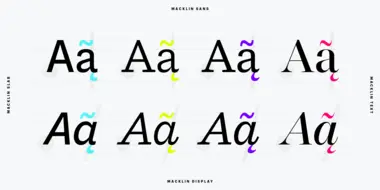Punctuation series: The section sign.

The section sign, also called a silcrow, is a typographic mark used to reference a particular section of a document. Its shape derives from a double ‘s’, which in Latin stands for signum sectionis (meaning ‘section symbol’).
The symbol originates from old scribes, where the manual writing of two joined ‘s’ letterforms resulted in many different shapes. This diversity is still preserved in typographic practice, so a type designer has an opportunity to play around (the header image shows the difference between the section sign for FS Siena in black and FS Brabo in pink). It may derive from the blend of two ‘s’ shapes, but the section symbol needs to stand out, be noticeable as a symbol and not too similar to the letter ‘s’. It can be a fun character to draw, but it can also be a nightmare. Anyone who has designed a typeface knows that getting the shape of the ‘s’ right is a complicated task. And then you get to the silcrow, and it’s double trouble – you get two ‘s’ shapes combined. It can be quite a challenge to achieve an elegant and harmonious design. Good type designers need to pay attention to every character in the typeface, and when it comes to the section sign you may spend days perfecting its curves and then rarely see it in use.
It’s most frequently seen in legal documents (alongside the pilcrow), when citing numbered or lettered sections and statutes:
Please refer to document A, § 122.
A section mark is followed by a number, so it’s a good idea to use a nonbreaking space right after it, to make sure that the symbol and the number don’t end up separated on two different lines. When referring to multiple sections, it is necessary to double up:
Please refer to document A, §§ 122-125.
In rare occasions it can be used to link to a footnote, when the asterisk (*), the dagger (†) and the double dagger (‡) are already in use on the page.
* Fun fact: A modified version of the section sign is used throughout the video game The Sims, as a symbol for its fictitious currency, the Simoleon.














